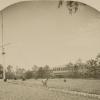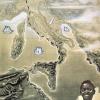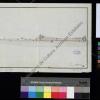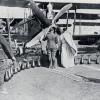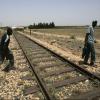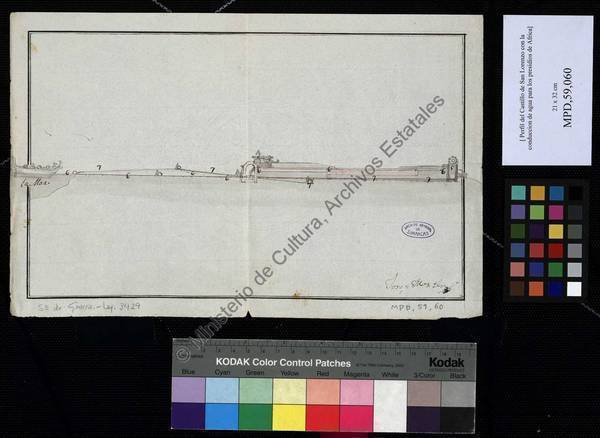Water for living on the edge
Water was long a major issue for the Spanish presence in Ceuta and Melilla. Residents there used to build cisterns and reservoirs to collect and store water. In the face of the most severe shortages, drinking water was delivered to Spanish enclaves by ship. Maintaining sufficient reserves and supply mostly fell to military authorities, as the large part of population in both settlements were garrisons stationed there. During the Rif War (1921–1926), Spanish military engineers drilled an exploration well on Moroccan territory seeking – with some success – for springs and subterranean deposits. One could argue that the need for water was one of the factors that pushed the limits of Spanish enclaves in northern Africa. Significantly, supplying Ceuta and Melilla with fresh water was described as a patriotic venture. When Spain recognized the independence of the Spanish Protectorate of Morocco in 1956, most of the fresh water sources found themselves back within Moroccan territory. Over the years, the country continued supplies to Melilla in exchange for electricity, of which the enclave had a surplus. Spaniards, however, continued to seek their own sources. The final solution of the "historical water problem" in the enclaves came with the use of seawater desalination technologies. The single plant opened in in Melilla in 2005 has a capacity of twenty-two million liters per day, which covers the current demand of its entire population and economy.
 Previous Story
Next Story
Previous Story
Next Story
How to cite this page
Slawomir Lotysz, 'Water for living on the edge', Inventing Europe, http://www.inventingeurope.eu/story/water-for-living-on-the-edge
Sources
- Ronda, Javier. "Adiós al problema del agua en Melilla: primera piedra de la nueva planta desaladora de la Ciudad Autónoma." Ambienta: La revista del Ministerio de Medio Ambiente, no. 29 (2004): 15-19.
- Cravioto, Carlos Gozalbes. "El agua en la Ceuta medieval: obtencion, almacenamiento. Y distribucion," in El agua en zonas áridas. Arqueología e historia. Hidráulica tradicional de la provincia de Almería, edited by Lorenzo Cara Barrionuevo. Almería: Instituto de estudios almerienses, 1989.





